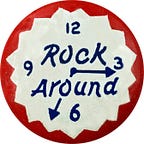Tracing Bob Dylan’s NYC Roots: Caffe Reggio & The Bitter End
A Complete Unknown, a film that follows the dawn of Bob Dylan’s career after the 19-year-old Minnesotan arrived in New York City, is now being filmed around town. In an excerpt from the book New York Groove: An Inside Look at the Stars, Shows, and Songs That Make NYC Rock, we look back at one of the Greenwich Village spots where Dylan performed.
Please do not highlight.
Caffe Reggio
In Chronicles, Volume One, Bob Dylan described most of the music venues of Greenwich Village in the early 1960s as “nameless and miserable, low-level basket houses or small coffeehouses where the performer passed the hat. But I began to play as many as I could. The narrow streets were infused with them.
“They were small and ranged in shape, loud and noisy, and catered to the confection of tourists who swarmed through the streets at night. Anything could pass for one — double-door parlor rooms, storefronts, second-story walk-ups, basements below street level, all holes in the wall.”
Opened in 1927, Caffe Reggio was one of the cafés where Dylan and other folksinger played. It claims to be the first café in the US to serve cappuccino. Music is no longer performed, but Caffe Reggio remains a popular Greenwich Village haunt, featured in movies such as The Godfather Part II, Shaft, Serpico, and Inside Llewyn Davis.
The Bitter End
Fred Weintraub opened The Bitter End in 1961, a Greenwich Village coffee house that presented folk singers, poets, and comedians. Bob Dylan, Joni Mitchell, Woody Allen, Tom Paxton, and George Carlin performed early in their careers. Kris Kristofferson told the New York Times that The Bitter End was a place where “people like me and Bob Dylan didn’t just perform, we came to hang out.” Folk singer Tom Paxton said The Bitter End was a “place to learn, to be bad, a place where you could clock your hours, learn what worked and didn’t.”
Today The Bitter End calls itself “the oldest rock and roll club in New York City.” Paul Colby, who had managed the club, bought The Bitter End from Weintraub in 1974. According to Colby, both James Taylor and Neil Young bombed when they appeared. Bob Dylan put together plans for 1975’s Rolling Thunder Revue at the club during a brief period that it was renamed The Other End.
Randy Newman, the Isley Brothers, Curtis Mayfield, and Tommy James & the Shondells recorded their albums live. Lady Gaga performed at The Bitter End before the release of her debut album.
In recent years Colby ran The Bitter End with partners Ken Gorka and Paul Rizzo. Colby died in 2014; Gorka in 2015. Paul Rizzo continues to run the club.
Frank Mastropolo is the author of New York Groove: An Inside Look at the Stars, Shows, and Songs That Make NYC Rock and Fillmore East: The Venue That Changed Rock Music Forever.
